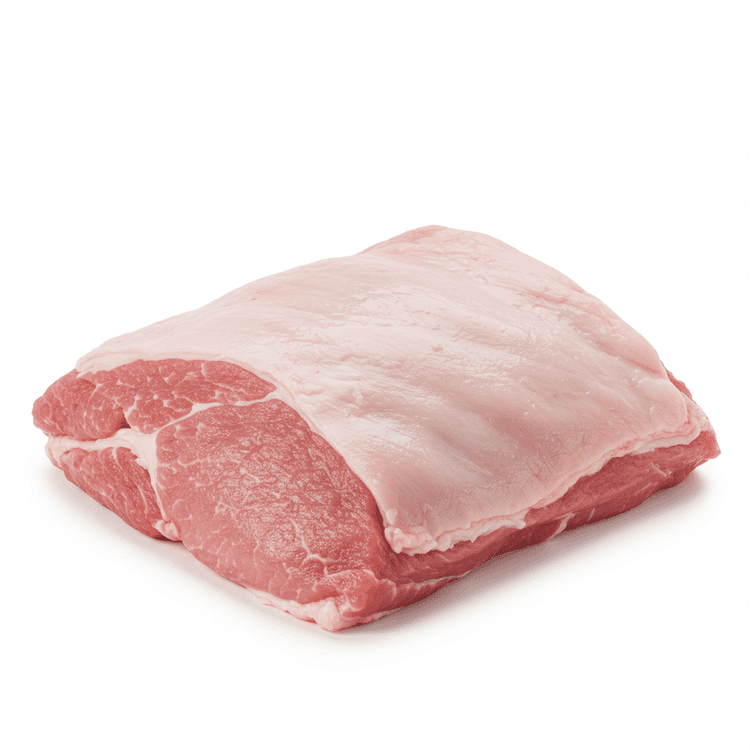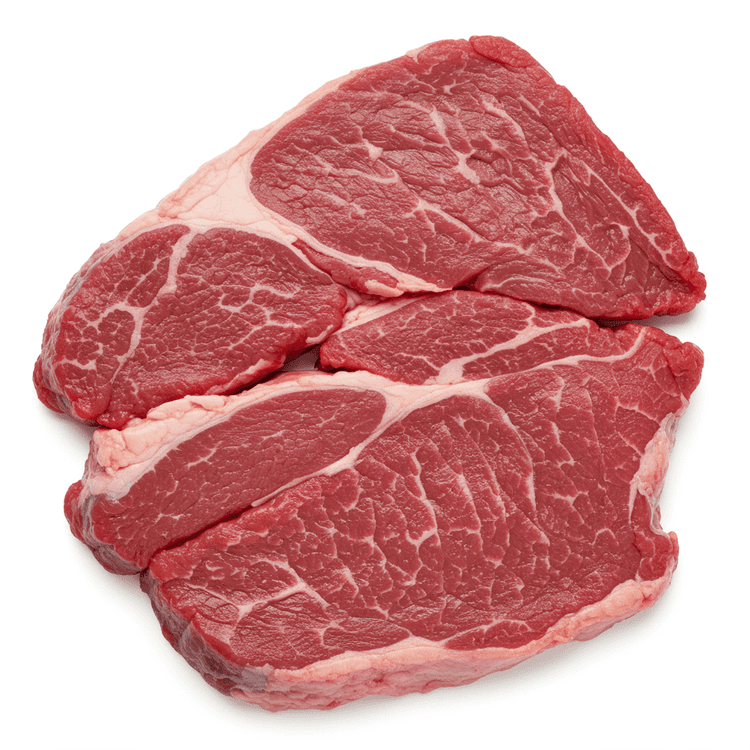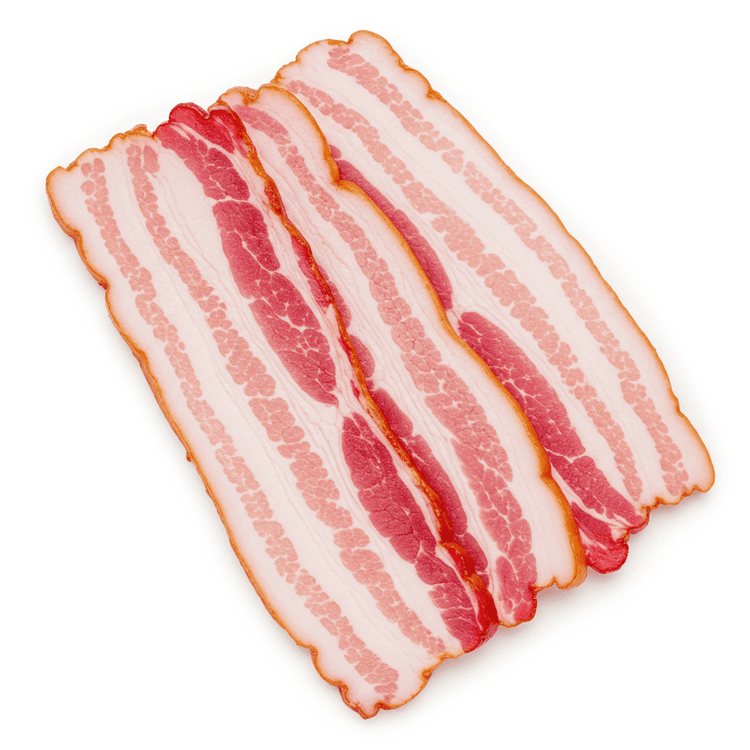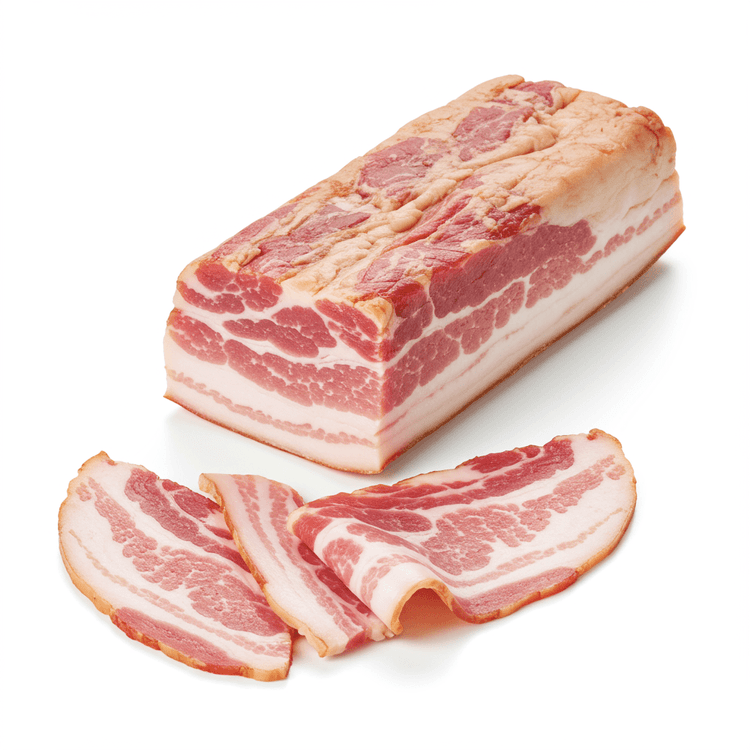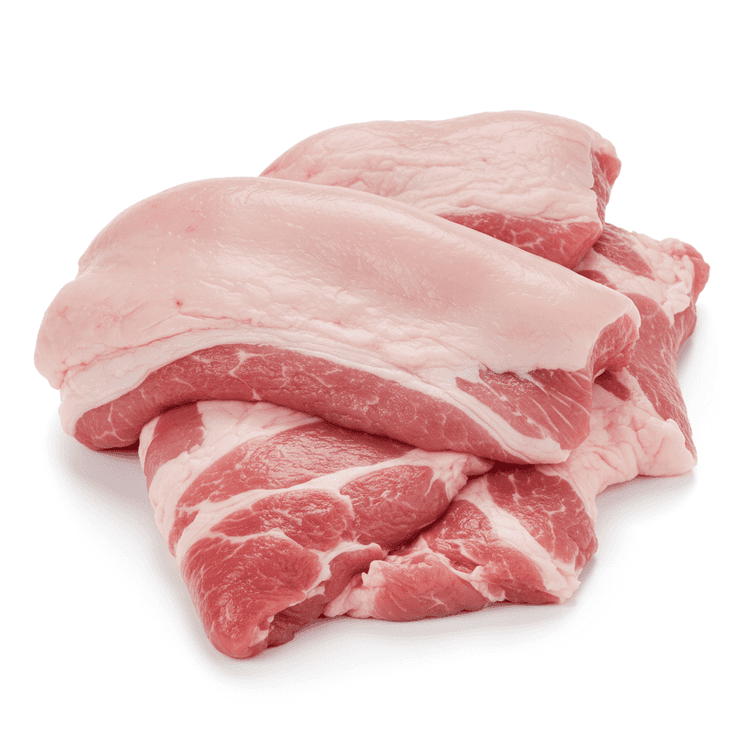
Pork Cheek
Pork cheek, also known as guanciale (though technically guanciale is cured pork cheek), is a flavorful and increasingly popular cut of pork known for its rich, melt-in-your-mouth texture. This cut comes from the face of the pig, offering a deep, savory, and slightly sweet pork flavor that's more intense than pork belly. Pork cheek is heavily marbled with fat, which renders beautifully when cooked, creating a succulent and tender result. It's usually sold fresh or cured, depending on the application.
Common Uses
- To prepare classic Italian dishes like pasta alla gricia and pasta all'amatriciana, pork cheek (guanciale) adds a distinct, savory flavor that can't be replicated with other pork cuts; dice it finely and render the fat for a rich and flavorful sauce base.
- Braised pork cheek becomes incredibly tender and flavorful, making it perfect for stews, ragus, and slow-cooked dishes; sear the cheeks first for added depth, then braise in wine, broth, or other liquids until fork-tender.
- Grilled pork cheek provides a smoky and slightly crispy texture; marinate the pork cheek before grilling to enhance the flavor and help it stay moist.
- Pork cheek can be cured and used in charcuterie; curing helps to preserve the meat and intensifies its flavor creating incredible, savory snacks.
- In tacos and other street food applications, slow-cooked or braised pork cheek can be shredded and used as a flavorful and tender filling.
- Rendered pork cheek fat can be used in place of other cooking oils or fats, to add a rich pork flavor to dishes; reserve the rendered fat from cooking pork cheek and use it for roasting vegetables or searing other meats.
Nutrition (per serving)
Nutrition (per serving)
Calories
278.0kcal (13.9%)
Protein
21.5g (43%)
Carbs
0.0g
Sugars
0.0g
Healthy Fat
10.8g
Unhealthy Fat
8.4g
% Daily Value based on a 2000 calorie diet
Nutrition (per serving)
Calories
278.0kcal (13.9%)
Protein
21.5g (43%)
Carbs
0.0g
Sugars
0.0g
Healthy Fat
10.8g
Unhealthy Fat
8.4g
% Daily Value based on a 2000 calorie diet
Health Benefits
- Rich source of protein, essential for muscle building and repair.
- Contains B vitamins like B12, supporting nerve function and energy production.
- Provides minerals such as iron and zinc, crucial for immune health and red blood cell formation.
- Offers collagen, potentially beneficial for skin elasticity and joint health.
- Contains monounsaturated fats, considered heart-healthy when consumed in moderation.
Substitutes
Chefadora AI is here.
Experience smarter, stress-free cooking.
Storage Tips
Pork cheeks are best used fresh, but can be stored properly to maintain quality. Refrigerate fresh pork cheeks immediately at a temperature below 40°F (4°C). Wrap them tightly in plastic wrap or place them in an airtight container to prevent drying out and cross-contamination. Properly stored, raw pork cheeks can last for 1-2 days in the refrigerator. For longer storage, freeze them in airtight freezer bags or containers. Frozen pork cheeks can maintain their quality for several months.
Marnirni-apinthi Building, Lot Fourteen,
North Terrace, Adelaide, South Australia, 5000
Australia
